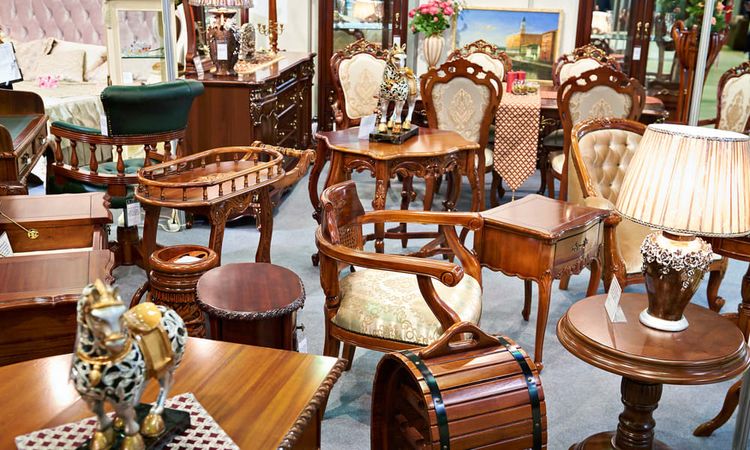Volkswagen Vanagon — History, Ownership, Maintenance, and Camper Conversion Guide
The Volkswagen Vanagon represents a unique chapter in automotive history, blending practicality with adventure-ready design. Produced from 1980 to 1991, this iconic van became synonymous with road trips, camping expeditions, and alternative lifestyles. Whether you're considering purchasing a Vanagon, maintaining one, or converting it into a camper, understanding its history, mechanical characteristics, and ownership realities is essential. This guide explores everything from engine options to conversion tips, helping you make informed decisions about this beloved vehicle.

The Volkswagen Vanagon has earned a devoted following among vintage vehicle enthusiasts, outdoor adventurers, and those seeking a vehicle that combines functionality with character. Its boxy silhouette and versatile interior made it an ideal platform for both daily transportation and weekend getaways. Understanding what makes this vehicle special requires looking at its origins, mechanical design, maintenance needs, and the vibrant community that keeps these vans on the road decades after production ended.
Overview and History of the Vanagon
Volkswagen introduced the Vanagon in 1980 as the successor to the Type 2 Bus, marking the third generation of their iconic van lineup. The name Vanagon combines van and wagon, reflecting its dual-purpose nature. Production spanned from 1980 to 1991 in Germany, with the vehicle sold across North America, Europe, and other markets under various names including Transporter T3 and Caravelle.
The Vanagon featured a rear-engine, rear-wheel-drive layout, continuing Volkswagen’s traditional configuration but with significant updates. The body design incorporated more angular lines compared to its predecessor, improved aerodynamics, and a roomier interior. Multiple variants were offered including passenger vans, cargo versions, crew cabs, and factory camper models known as Westfalia conversions. The vehicle underwent several updates during its production run, with improvements to engines, transmissions, and interior appointments. By 1991, Volkswagen discontinued the Vanagon in favor of the front-engine Eurovan, marking the end of an era for rear-engine VW vans.
Engines, Drivetrain Options, and Performance Characteristics
The Vanagon was offered with several engine configurations throughout its production life, each with distinct characteristics. Early models featured air-cooled engines, while later versions transitioned to water-cooled powerplants. The base engine was a 1.9-liter air-cooled flat-four producing approximately 67 horsepower, providing adequate but modest performance. In 1983, Volkswagen introduced a 1.9-liter water-cooled engine with 78 horsepower, offering improved reliability and power delivery.
The most sought-after variant is the Syncro, introduced in 1986, which featured all-wheel drive capability. This model appealed to adventurers seeking better traction in challenging conditions. Some markets also received diesel engines, including a 1.6-liter diesel and later a 1.9-liter turbodiesel, both valued for fuel efficiency despite slower acceleration. Transmission options included a four-speed manual, five-speed manual, and a three-speed automatic, with manual transmissions being more common and generally more reliable.
Performance characteristics reflect the era and design priorities. Acceleration is leisurely by modern standards, with most models reaching highway speeds gradually rather than quickly. Top speeds typically range from 70 to 85 mph depending on engine and load. Fuel economy varies from 16 to 22 miles per gallon, with diesel models achieving slightly better efficiency. The rear-engine configuration provides good traction in slippery conditions but requires adjustment to driving dynamics, particularly in emergency maneuvers.
Common Maintenance Tasks, Troubleshooting, and Known Issues
Owning a Vanagon requires commitment to regular maintenance and awareness of common problems. Routine tasks include oil changes every 3,000 to 5,000 miles, valve adjustments on air-cooled engines, and monitoring cooling system health on water-cooled variants. The air-cooled engines require careful attention to cooling tin and fan belt condition, as overheating can cause serious damage. Water-cooled engines introduced different challenges, including coolant leaks and water pump failures.
Several known issues affect Vanagons across model years. The automatic transmission, particularly in earlier models, is prone to failure and expensive to rebuild. Water-cooled engines can develop head gasket problems if overheating occurs. Rust is a persistent enemy, especially in floor pans, battery tray areas, and around windshield seals. Electrical gremlins frequently arise due to aging wiring and corroded connections. The fuel injection system on later models can develop issues with sensors and relays.
Troubleshooting often begins with understanding these common failure points. Hard starting may indicate fuel pump problems or ignition issues. Poor running could stem from vacuum leaks, carburetor problems on early models, or fuel injection faults on later versions. Overheating requires immediate attention to prevent catastrophic engine damage. Regular inspections of brake components, suspension bushings, and steering linkage help maintain safety. Many owners join online communities and forums where experienced Vanagon enthusiasts share diagnostic advice and repair solutions.
Camper Conversions, Interior Layouts, and Conversion Tips
The Vanagon’s spacious interior makes it an ideal candidate for camper conversions. Factory Westfalia conversions remain highly desirable, featuring pop-top roofs, fold-down beds, kitchenettes with sinks and stoves, refrigerators, and clever storage solutions. These factory conversions were engineered specifically for the Vanagon platform, offering reliability and thoughtful design. Non-Westfalia models can be converted using aftermarket components or custom builds.
Interior layouts vary based on intended use and personal preferences. Common configurations include rear bench seats that convert to beds, side-facing bench seating, swivel front seats, and removable middle row seats. Pop-top installations add standing room and sleeping space without significantly affecting driving dynamics. Many owners install solar panels, auxiliary batteries, and inverters to provide off-grid electrical power. Water systems range from simple jugs to installed tanks with pumps and sinks.
Conversion tips from experienced builders emphasize planning and quality materials. Start by addressing mechanical reliability before investing in interior improvements. Remove interior panels to inspect for rust and repair structural issues first. Consider weight distribution when adding components, as the rear-engine design is sensitive to balance. Use marine-grade materials for durability and moisture resistance. Insulation improves comfort in various climates but requires careful installation to avoid trapping moisture. Ventilation is crucial to prevent condensation and maintain air quality. Many successful conversions blend modern amenities with period-appropriate aesthetics, preserving the vintage character while adding contemporary convenience.
Buying Advice, Parts Availability, and Ownership Costs
Purchasing a Vanagon requires careful evaluation and realistic expectations about costs. Prices vary widely based on condition, model year, engine type, and conversion status. Well-maintained examples with desirable features command premium prices, while project vehicles needing restoration sell for considerably less. Syncro models and Westfalia campers typically represent the highest values. Thorough pre-purchase inspections are essential, ideally conducted by mechanics familiar with these vehicles.
Parts availability presents both challenges and opportunities. Common maintenance items like filters, belts, and brake components remain readily available through various suppliers. Specialized parts, particularly for Syncro models and specific trim pieces, can be harder to source and more expensive. The enthusiast community supports a robust aftermarket, with companies specializing in Vanagon parts, upgrades, and reproduction components. Online marketplaces and forums facilitate parts trading among owners. Some components require sourcing from Europe or patient searching through salvage yards.
| Ownership Aspect | Estimated Cost Range | Notes |
|---|---|---|
| Purchase Price (Running Condition) | $5,000 - $25,000 | Varies by condition, model, and features |
| Purchase Price (Westfalia Camper) | $15,000 - $45,000 | Premium for well-maintained examples |
| Annual Maintenance | $800 - $2,000 | Assumes DIY basic maintenance |
| Major Repair (Engine/Transmission) | $2,000 - $6,000 | Professional shop rates |
| Insurance (Vintage/Classic) | $300 - $800 annually | Depends on usage and coverage |
| Parts (Common Maintenance) | $200 - $600 annually | Filters, fluids, belts, brakes |
Prices, rates, or cost estimates mentioned in this article are based on the latest available information but may change over time. Independent research is advised before making financial decisions.
Ownership costs extend beyond purchase price and routine maintenance. Fuel expenses reflect the era’s efficiency standards, with most owners reporting 17 to 20 miles per gallon in mixed driving. Insurance for vintage vehicles can be affordable through specialty classic car policies, though usage restrictions may apply. Storage considerations matter, as these vehicles benefit from covered parking to minimize rust and weather damage. Many owners develop mechanical skills to reduce labor costs, as professional Vanagon specialists charge premium rates reflecting their specialized knowledge.
The Vanagon ownership experience rewards patience, mechanical aptitude, and appreciation for vintage vehicle character. These vans won’t match modern vehicle refinement or reliability, but they offer unique charm and capability that continues attracting devoted enthusiasts decades after production ended. Prospective owners should approach purchase decisions with realistic expectations about maintenance demands and costs, while recognizing the vibrant community and adventure potential these iconic vans provide. With proper care and attention, a Vanagon can deliver years of memorable experiences on roads and campsites worldwide.




